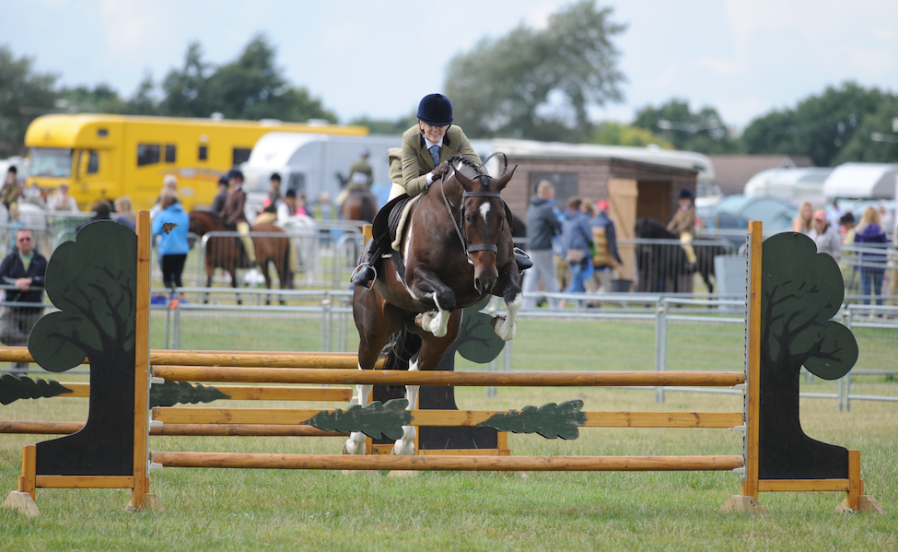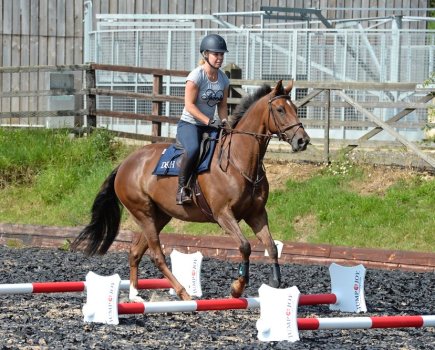Scan any show schedule and you’re likely to see working hunter horse and working hunter pony classes in the line-up — perhaps a working show horse class as well.
A combination of jumping and flatwork, with two judges typically assessing horses for their jump, ride, and conformation, working hunter classes are a lot of fun to take part in (and watch).
“Working hunter class is an attractive proposition for equestrians because horses don’t have to be quite such beauty kings and queens as in the weight classes,” says Jayne Ross, a titan of the showing world with seven supreme Horse of the Year Show and five Royal International supreme titles to her name.
“Rather, they need to be able to do what it says on the tin — work — and so displaying performance and athleticism is the name of the game.
“After all, they have to jump a good round of fences before they progress and the very best working hunters are the ones who look like they could stand — and enjoy — a good day’s hunting.”
Working show horse classes
Working show horse classes run in an identical format to a working hunter, but all types, not just hunters, can turn out to compete, from cobs to hacks to riding horses.
This only helps to broaden the appeal of a workers class, and it is up to the judge to assess the entries according to type.
However, it is also important that riders do homework beforehand to ensure that they are prepared for every element of the workers class as a partnership.
What’s involved
Entrants are marked out of 100. The usual format is:
- An individual round of jumping (worth 60% of the marks).
- Group ride, during which all horses in the class go in single file around the ring at the same time.
- Judge ride or individual show (worth 20% of the marks).
- Conformation inspection (worth 20% of the marks. May require stripping down to the bridle).
Correct tack and attire
As in any showing class, the judges expect to see clean, discreet tack and a matching numnah, not a saddlecloth.
Brown tack is ideal, but black is acceptable.
Avoid brass and fluff on the kit, and while every rider will want to use the tack their horse goes well in, steer clear of too much leatherwork if possible.
It is perfectly acceptable to use a well-fitting jumping saddle, especially if the track is on the bigger side. Remember, though, that apart from boots, no changes can be made to the tack after the jumping.
Hind boots aren’t permitted for wear in workers classes and boots should ideally have buckle fastenings, rather than Velcro.
For the rider, the garb is standard — tweed jacket, cream or canary jodhpurs, long boots and long hair in a net — plus a body protector for the jumping if the rider wishes to use one, but ideally it is worn under the jacket.
Studs are acceptable too. However, anyone planning to use studs who hasn’t before should practise with them at home, warns Jayne.
“Riding with studs will feel different and the horse needs to get used to them and realise that they are there to help,” she states.
As this is a class for working horses, they should be presented as such. Manes are plaited (unless hogged), tails pulled at the dock and any feather trimmed.
The ears and jawline must be tidy.
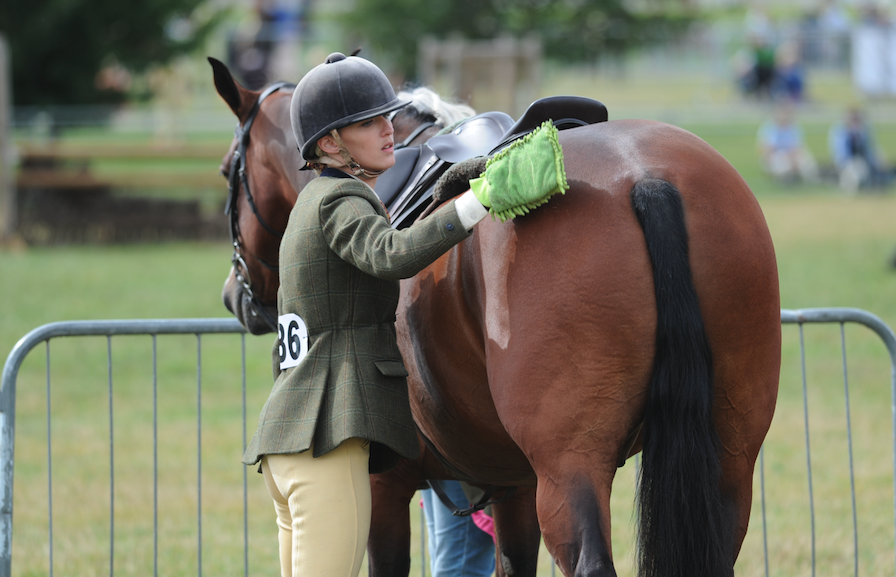
Preparation
Horses and ponies who compete in working hunter classes must be a fair bit fitter than the average show horse because they do much more. They need to look ‘tight’, so they don’t want to be carrying too much weight.
With this in mind, it is key to undertake plenty of hacking in the weeks and months running up to a show, including hill work if possible.
“With the jumping as technical as it is today, the horse needs to be capable over a demanding course and should be trained over grids and poles at home to boost his athletic ability,” advises Jayne.
“The preparation isn’t just physical, but mental, too. Of course, true mileage is only achieved at a show, but the hunting field is a wonderful place to teach a young horse.
“I would also be jumping proper courses once or twice a week with my workers, either in competition or during an arena hire.”
The jumping round
“When I did workers many years ago, I would take my eventers and the fences would flow and meet us easily. Nowadays the courses are big, strong and they take some jumping,” says Jayne.
The 60% score weighting for this part of the class is split, with 40 marks available for the jumping round and 20 marks for style.
What the judge is looking for:
A flowing clear round in a nice, forward-going rhythm.
“The horse shouldn’t look like he is showjumping, rather as though he is covering the countryside with ability and surefootedness,” explains Jayne.
“Only horses who jump clear, or perhaps have one down, will compete in the rest of the class.”
How to please the judge:
According to Jayne, many riders are too cautious and so they should ensure that their horse is displaying a forward stride. At the same time, they should avoid galloping round and fighting against the horse for control.
“The horse shouldn’t look like he or she is tricky — it wouldn’t be fun to hunt on something that pulls the rider’s arms out,” adds Jayne.
“Jumping a polished round relies on the horse going well on the flat. Achieving a forward, flowing round stems from having the horse balanced and attuned to the jockey’s weight above all.
“Doing too much with the hand blocks a horse’s forward stride, whereas dropping weight down into the saddle means that they know to stall slightly, and the rider can put their leg on and go upwards, rather than along, into the fence.”
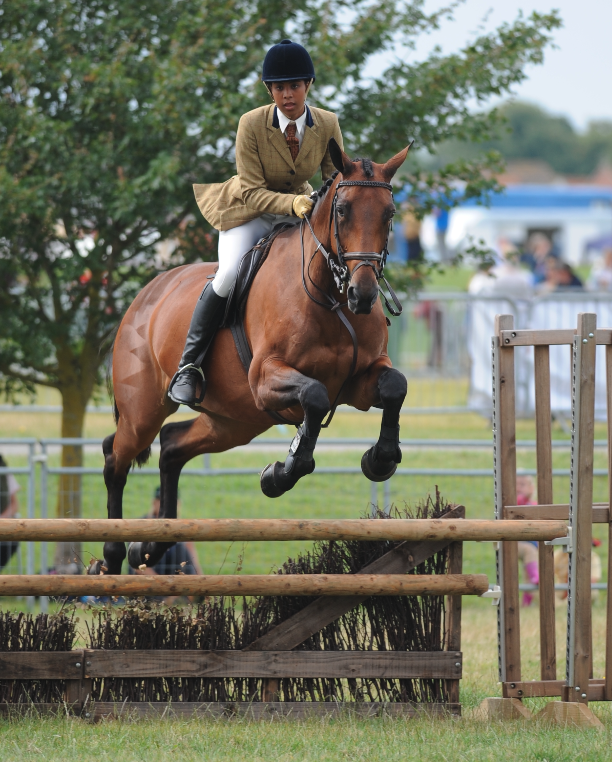
The group ride
A working hunter horse is athletic, comfortable and easy to ride. The group ride brings the rider the chance to display all of these traits alongside fellow competitors.
Horses go in single file and riders are given directions from the steward when a change of pace or rein is required.
Bear in mind that some horses can feel exuberant after jumping, especially if the jumps remain in the ring. Flat schooling around fences regularly at home can help them to acclimatise.
Ring etiquette
“Once back in the ring it becomes like an ordinary show class, only some horses can be a little buzzier if they have just jumped.
“Clock the whereabouts of the other competitors and use the full extent of the ring to keep a good amount of space between you and the horse in front,” advises Jayne.
“Anyone who finds that they must circle away and rejoin the ride should do so at the back of the ring (the side the judge isn’t watching). However, see if riding deeper into the corners gives more room first.”
What the judge is looking for:
A presentable horse with plenty still in the tank.
“They should work in a forward rhythm and look relaxed and obedient, sitting quietly at the end of the rein,” says Jayne. “The judge wants to be feeling that they can’t wait to get on.”
How to please the judge:
Prepare the horse mentally and physically to return to the ring.
“Loosen his girth and go for a walk to regroup,” Jayne advises. “They may look a little dishevelled after they have jumped, so ask your helper to clean any saliva from their mouth and chest, and give the tack a wipe.
“Once the horse has got his breath back, go for a trot and a canter on a looser rein to settle and soften,” continues Jayne.
The gallop
Workers are expected to show a real gallop — and there is more to it than just kicking on.
What the judge is looking for:
A horse who moves up into gallop calmly and easily, has a good ground-covering stride and pulls up easily.
How to please the judge:
First and foremost, plan ahead to make sure that the horse has ample room.
“Don’t fire off from a corner, but rather quietly extend into gallop to ensure the horse’s best strides occur when passing the judge,” says Jayne.
“Try to sit quietly and pull up without too much hassle.
“A horse who looks as though he is pulling out his rider’s arms isn’t a good look, which is why the rider should train the horse to slow with their body.
“Like anything, practice beforehand will inform how long it takes the horse to extend and quietly compress. He also needs to be used to the gallop so that he doesn’t get excited and throw his head in the air in the ring.”
Individual/judge’s ride
From the group ride, contenders are called to line up ready for the judge’s ride. This order represents the current standings in the class.
If the judge doesn’t ride, the rider will need to be prepared to perform a short and sweet individual show instead.
“A little artistic license is needed here to play to the horse’s strengths and show them at their best,” says Jayne.
“For example, if the horse’s trot could do with some work, spend more of the show in canter.
“If the horse gets wound up anticipating a gallop, gallop first.
What the judge is looking for:
A biddable horse who is responsive, supple around the leg and soft in the hand.
“The judge should be able to imagine spending several hours in the saddle comfortably,” explains Jayne.
How to please the judge:
There is nothing worse for a ride judge than walking up to someone’s horse and hearing them say: “He’s never been ridden by anyone else before.”
“Be sure that the horse is capable of going nicely for strangers, and that means having others ride him from time to time at home,” Jayne advises.
“A judge likes to get on and away, so read up on who will be riding. If it is going to be a judge who is much taller than the regular rider, ensure that the helper has longer leathers and bigger irons to swap out.”
The group ride isn’t just about being pulled in top of the line. The rider needs to ensure that the horse is relaxed, responsive and ready for the ride judge.
“Don’t just think about looking good,” adds Jayne. “The horse needs to be going truly and be accepting of the aids.
“It is key to ride calmly, trying not to react if they are fresh. It can be tempting to grab the reins, but this usually only exacerbates things.”
Conformation assessment
A horse’s conformation will be judged out of 20 marks. A few lumps, bumps and minor blemishes can be forgiven.
In terms of form, a substantial front end with a nice sloping shoulder to sit behind, coupled with a short back, pastern and powerful hindquarter, are desirable traits.
“Anyone at a county show will need to strip the horse of his saddle and martingale and walk him up in-hand, so this needs to be practised at home,” says Jayne.
“Any rider without a helper will find that the steward will help them untack. At local shows, stripping is not always expected.”
Standing in line
Standing in line for a while is a big ask for any horse, particularly an inexperienced one.
“If a horse is fidgety, practice helps, but don’t fall into the trap of filling them with polos or grass, as the behaviour will then be reinforced,” advises Jayne.
“They shouldn’t be chastised either; in fact, it is best to ignore it and try to relax the horse with a stroke and kind words.”
Showing is much easier with a horse who dozes off.
“If he wants to sleep, let him until the ride judge is about to get on,” agrees Jayne.
“Just before this moment, turn a circle or two to get the horse back into the zone. It is far better to let him quietly relax at other times, though.
“If you mess around with him, it can lead to him becoming finicky and pushy in line.”
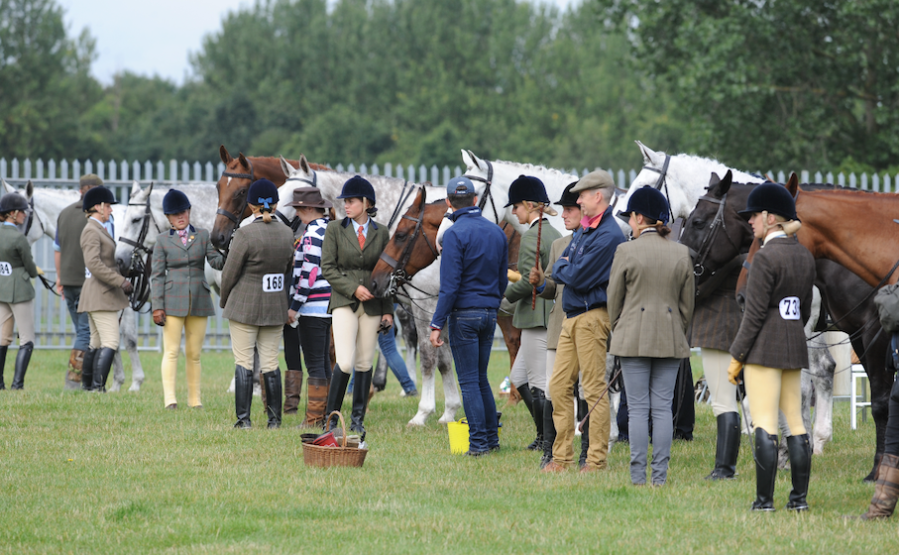
The finale
If the horse has been stripped, they can be tacked up as soon as the judge has dismounted.
All horses and riders will then resume walking large around the ring to wait for the results.
Once the judge has calculated the points, the class placings will be called.
If you hear your number, congratulations — turn into the centre of the rung and take your place in the final line up.
“When a rider is called up, they don’t need to worry about where they need to stand,” reassures Jayne.
“They won’t get it wrong, because the steward will be there to guide them. No one is out there to try and trap the rider into doing anything wrong; they simply want to see everyone do their best.
“I truly believe that it is up to the more experienced producers, riders and other members of the showing community to be open to questions and to help people find their way.
“Never be afraid to ask — most people are keen to help other riders succeed.”
Images © Your Horse Library/Kelsey Media Ltd

